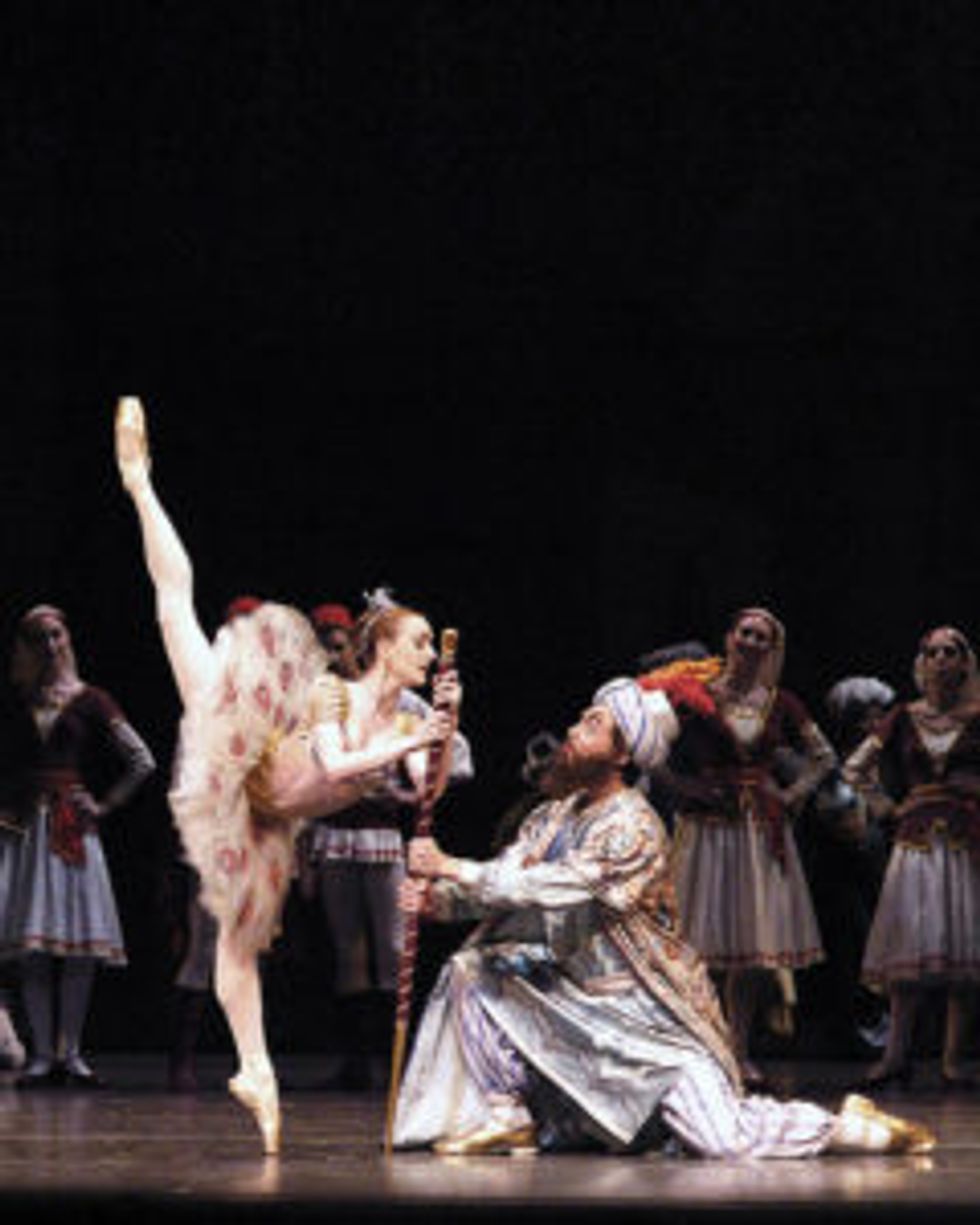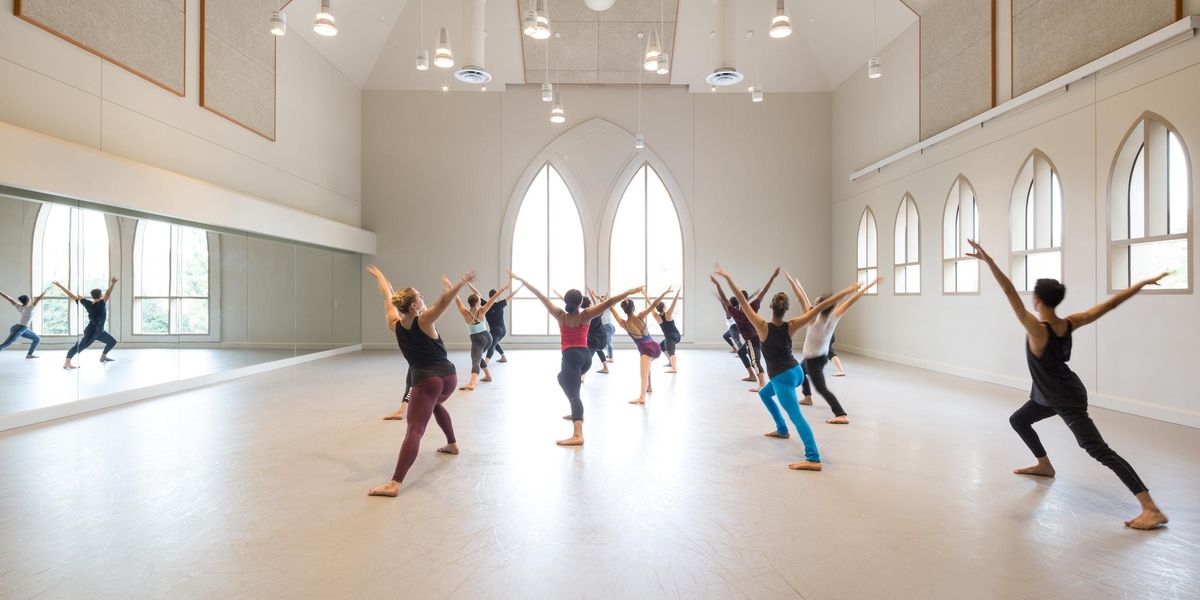ABT's Roman Zhurbin Has Transformed Character Roles Into Career-Making Breakthroughs
People generally enter the rigorous field of ballet with big dreams of one day dancing Romeo or Albrecht or Giselle. But there are dancers who elevate ballet’s “secondary” parts to high art, turning what could be generic appearances into moments of complexity and drama. Or the opposite: into flashes of side-splitting comedy, just as cathartic in their own way.

Zhurbin, with Gillian Murphy, as the Pasha in Le Corsaire. PC Gene Schiavone, Courtesy ABT
Roman Zhurbin, a soloist at American Ballet Theatre, is one of these artists—a truly great character dancer. In the company’s last few seasons he has made sparks in a series of featured roles, from the stern but warmhearted Widow Simone in Sir Frederick Ashton’s comedy La Fille mal gardée to a surprisingly kind King Florestan in Sleeping Beauty.
It’s not a path he embarked on intentionally. Zhurbin, now 32, started ballet late, in high school, and almost by chance. His family emigrated to New York from Moscow when he was 13. It meant leaving behind the folk-dance ensemble he had performed with since he was about 6. Dancing was part of home life in Russia, too. After dinner, relatives and friends used to push back the table, bring out the accordion and do traditional dances like the gopak.
As a newly arrived Russian kid in the Bronx, everything felt alien. He didn’t speak English. He didn’t have many friends. When he was 15, at his father’s suggestion, he auditioned for Fiorello H. LaGuardia High School of Music & Art and Performing Arts, a public school in Manhattan with a strong dance program. He was accepted after dancing a solo set to Whitney Houston, created for him by an uncle. (“I’m kind of embarrassed now,” he says, with a laugh). There he found a new family. Or as he puts it, “I went full-on bunhead.”
After four years at LaGuardia, and another of intensive ballet study at Studio Maestro, he went to ABT’s summer intensive. A position in the studio company opened up late in the summer and he was given a chance. “We had a variations class and Kevin McKenzie came in. John Meehan was coaching. And the variation just clicked. I didn’t fall out of anything and everything was nice and clean. John came up to me and said, ‘My dear boy, someone up there’—pointing up at the sky—’likes you.’ And that’s it. They gave me a spot.”
McKenzie, ABT’s artistic director, remembers that session. He saw a dancer who still lacked refinement, but “grasped what he needed to do and wasn’t discouraged. He had something you can’t teach: imagination.” Even so, Zhurbin’s transition to the main company in 2005 was a steep climb. “My main thing was, just don’t stand out,” he says, “don’t mess up.”
Then came his first opportunity. The former Joffrey Ballet dancer Gary Chryst was setting Michel Fokine’s Petrouchka on the company. Zhurbin was cast as the Chief Coachman, a role that requires a fiery personality and the ability to convincingly perform folk-dance steps. “I came alive,” says Zhurbin, “finally, I could just let go.” Chryst offered him his first big role, as the Moor.
More roles came his way. One of his signatures became Tybalt, Juliet’s haughty, violent cousin in Sir Kenneth MacMillan’s Romeo and Juliet. He learned the role from Victor Barbee, then the company’s associate artistic director and an important mentor. Barbee helped him figure out how to hold the stage, and how to develop his own interpretation, based on small details. “There are so many ways to say something,” explains Zhurbin. “You have to find these little moments when the character changes.” Zhurbin avoids the obvious interpretation of Tybalt as a thug; in the opening scene, he’s superior but dashing. His contempt for Romeo and his friends is palpable. They’re boys; he’s a grown man. Which makes the final confrontation between them all the more brutal.
Sometimes a character role becomes the center that holds everything else together. In Kurt Jooss’ 1932 The Green Table, the character of Death is a menacing, almost mechanistic figure. He comes after each of the other characters, leading them away one by one. Zhurbin prepared for a long time for this role, watching videos and conferring via Skype with Christian Holder, a former Joffrey dancer who had learned it from Jooss himself. The character really got under his skin.
His performance in 2015 was at once powerful and infinitely sad. At one point, he looked up from one of his victims, and his eyes seemed to communicate immeasurable suffering. What was he feeling at that moment? “I thought, Her suffering stops now. She has suffered enough.”
Roles like this sustain him even when, like every dancer, he’d like to dance more. He’d love to do Twyla Tharp’s Sinatra Suite and In the Upper Room, and, secretly, dreams of dancing Yuri Grigorovich’s swashbuckling Spartacus. (You can take the boy out of Russia…) On occasion he has thought about leaving ABT to pursue other opportunities. But in the end he has stayed. “I realized I could never do what our principals can do, on that level,” he says. “But I can help tell a story with them. I get to be part of that magic.”




